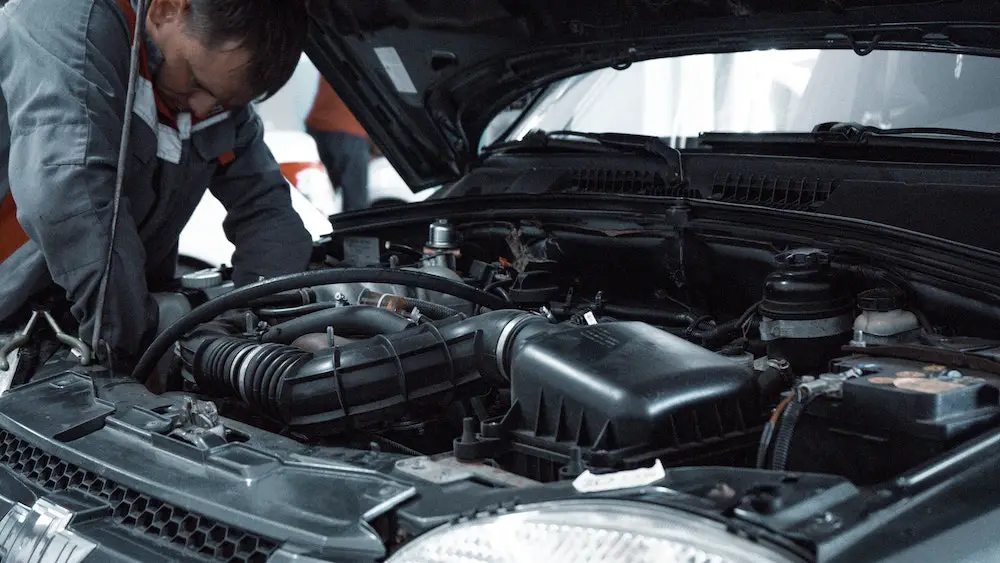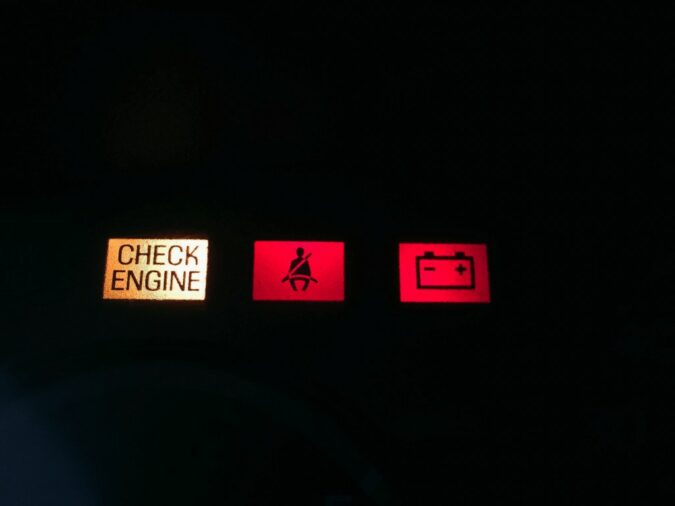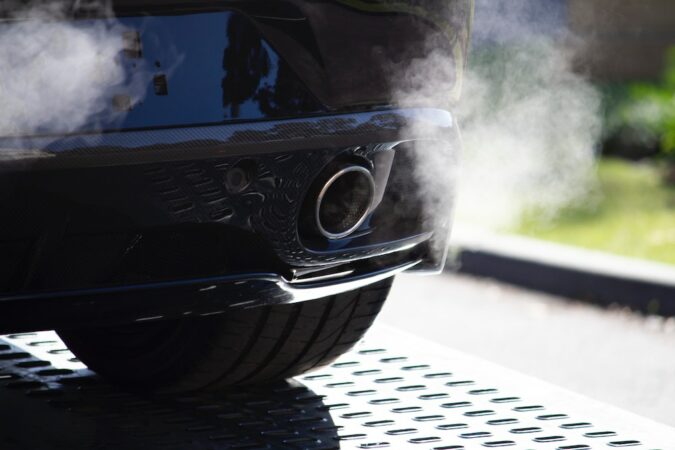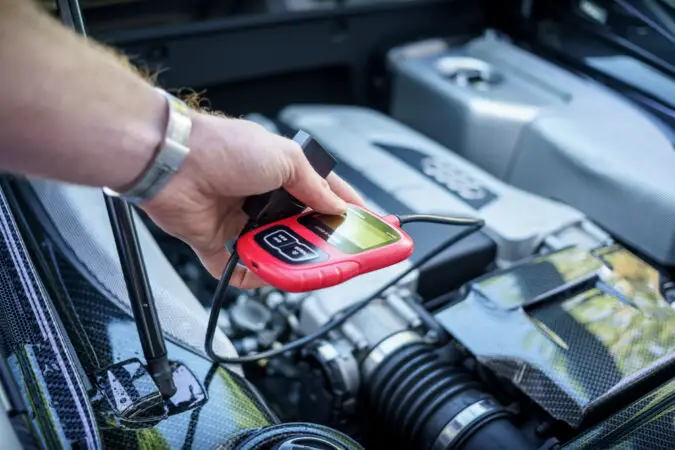Are you having a problem like rough idle of your engine and the check engine light turns on so you think that the EGR valve is bad? If this is the case, then you are at the right place because we are going to cover everything when it comes to this valve.
Having a problem like this can be a really frustrating thing to deal with. Why I’m saying this? Well, I’m saying this from my experience. In the past, I had a lot of problems with these EGR valves. They are good at their work until they break. And when they break and end up clogged up with carbon, they create a lot of headaches for us the owners.
So, getting yourself properly informed about this problem and learning the basics of what is an EGR valve and the bad EGR valve symptoms is key if you want to avoid any future headaches with your car. Diagnosing this problem is not a big problem and we are going to help you out with that in this article.
First, we are going to cover what is an EGR valve and what does an EGR valve function in practice. Then we will discuss the bad EGR valve symptoms. Then we will cover the EGR valve replacement cost and also how you can clean it with an EGR valve cleaner. So, if you want to learn more about this topic. You can follow along till the end because there will be a lot to cover on this topic.
What Is An EGR Valve
Now before we dive deeper into what does an EGR valve do, let’s learn what is an EGR valve in general terms. Knowing this will be extra useful for beginners who are not familiar with this type of device that is installed on our cars and knowing the basics will be extra useful. If you feel like you are better prepared, you can move on to the next chapters, if not, keep up with us for a while.
An EGR valve refers to exhaust gas recirculation. This valve is usually used in diesel engines. But some gas (or petrol) engines also have it.
This valve is an important emissions device that plays a big role in keeping the bad gases out of the atmosphere. Not allowing the harmful Nox particles to escape in the atmosphere is really important and there is the point where this type of valve shines.
This valve has a really basic design. It has a diaphragm and a spring inside of the housing. When the computer activates the solenoid, it tells the valve to open. Then when there is no need, the computer directs the valve to close. A really simple process.
Everything is computerized nowadays in our cars and this is one of the components that work closely with the ECM also known as the Engine Control Module. Some people call it PCM, some call it ECU (engine control unit). But it’s the same thing.
This computer controls everything when it comes to your engine and makes sure that every sensor works perfectly. If not, you will start to experience bad EGR valve symptoms that we are going to discuss later on. Now after we learned what an EGR valve is, let’s move to the next question.
What Does An EGR Valve Do
We learned what is this valve and its method of action, Now let’s learn what does an EGR valve do? What is the main role and how does it work under the hood? This is useful to know if you want to learn the method of action of this device and how you can get around a possible problem with it.
This valve is basically an exhaust gas recirculation device. Meaning that it recirculates the exhaust gases from the exhaust manifold into the intake manifold.
This valve returns a portion from the exhaust gases and drives them into the intake manifold. This improves the combustion and also reduces the heat inside of the cylinders. These gases absorb the heat and prevent the high temperature from developing inside of the cylinders.
With this process of reducing the temperatures, there is a lower chance of creating NOx particles. The cooler the temps, the fewer of these toxic particles are created. Resulting in less pollution and a healthier environment for us the people. So, now you understand what does an EGR valve do.
Even though, this device is not installed in every engine out there. These exhaust gas recirculation systems are often found on diesel engines or turbocharged gasoline engines.
Naturally aspirated engines are not that prone to creating NOx particles. Even though, some of them have them. If your car has one, then you probably want to learn the EGR valve location and the EGR valve diagram. And that’s what we are going to cover next.
EGR Valve Location And EGR Valve Diagram
We covered the basics of this valve. Now let’s learn more about the EGR valve location and also see more on the EGR valve diagram.
When it comes to the location of this component, it is worth noting that in all of the cases it is closely mounted to the intake manifold. On older cars, these valves have a round shape with a shiny metal cover on top of them. But on more modern cars they look pretty different from application to application.
Meaning that for the specific visualization of this component on your car, you should look online and learn more about the mounting position of this valve on your vehicle.
Also, go online and learn more about the EGR diagram for your specific vehicle. Knowing the diagram will help you out when it comes to understanding how this component works and how you can fix it before the problem becomes bigger and the EGR valve completely clogs up and prevents the gas to flow inside of it.
Now let’s move on to the bad EGR valve symptoms and learn more about the situations that you will come across when this valve goes bad.
Bad EGR Valve Symptoms
Now as we cleared the basics, let’s focus more on the bad EGR valve symptoms. How you can tell that this valve is bad and needs cleaning or replacing? What are the signs of failure and how to overcome this problem?
More on that in the following chapters where we will dissect these issues in detail and then we will learn how to diagnose the problem using an OBD2 scanner tool and a little bit of ingenuity. So, if you want to learn more on this, follow along till the end because there will be a lot to cover on this.
1. Check Engine Light
The first in our list of bad EGR valve symptoms is the check engine light. As you probably know, all modern cars are computerized. Meaning that the exhaust gas recirculation valve is communicating directly with the ECM/PCM.
This communication allows the ECM to evaluate the data that is generated from this valve and then make a conclusion based on this information.
If the valve does not perform up to the standards and doesn’t open and close as it should. The engine air to fuel mixture will be completely messed up. The valve will stay open all the time and a lot of unmetered air will get into the intake. Or if it’s closed, it will prevent the essential gases from entering the combustion.
The more unmetered air gets into the intake or fewer gases, the worse the car will run. This will cause the computer to pay more attention to this problem and throw a check engine light on the cluster. This check engine light will show up.
At first glance, you will probably not going to know what is there for, but after some digging, you will come to the conclusion that the EGR valve is clogged. But how you can dig and find the main culprit for this problem? Well, that’s what we are going to find later in the article where we will learn more about this process. Now let’s move to the next in our list of bad EGR valve symptoms.
2. Rough Idle, Reduced Power Problems
The second in our list of bad EGR valve symptoms is the situation when you have rough idle and reduced power from the vehicle.
The engine will not like this type of work and will start to show its dark side. Imagine that the air to fuel mixture needs to be always in check and this happens. A lot of unmetered air enters the combustion or if the EGR valve is clogged up, none of the exhaust gases manages to pass through the valve and enter the combustion.
Two of the situations that you probably don’t want to happen. This is the case because there will be damaging results for your engine in terms of performance.
The engine will idle roughly and will not be happy at all. In addition to this, there will be poor power gains because the engine does not get the right amount of gases that this valve is supposed to deliver. A bad situation.
The car will work like it’s in limp mode and will basically struggle to run. The needle of the tachometer will shake and you will be able to feel this in the cabin how the engine is not happy at all. The performance will be quite poor. Overall, a bad situation, and this is one of the worst bad EGR valve symptoms. Now let’s move on to the next.
3. Increased Emissions
The third in our list of bad EGR valve symptoms is the issue with increased emissions. If you have a bad valve and you go testing your car when you do your registration, you will be highly likely to fail. Why I’m saying this?
Well, I’m saying this because the car will release a ton of NOx particles in the air. As you know when you take your car for registration there is an emission test that measures the gases. So, if you take your car like this, the readings will show a ton of NOx particles.
The exhaust gas recirculation valve is clogged and not being able to drive them into the intake manifold and neutralize them. Resulting in increased emissions. So, if you live in a state like California or New York, or any state that takes these things extremely seriously, you will be highly unlikely to register this vehicle unless you replace or clean this EGR valve.
How you can do that we are going to explain later in this article after we finish all of the bad EGR valve symptoms. Now let’s move on to the next symptom.
4. Engine Knock
The last in our list of bad EGR valve symptoms that we are going to address is the engine knock. This engine knock is not something like the rod knock that you probably are aware of. Meaning that this doesn’t mean that your engine is trashed and needs replacing.
But when an engine is knocking because of this valve it means that there is an issue inside of the cylinders. More precisely high temperatures.
These high temperatures are caused by the low gas flow of the EGR valves. When there are temperatures well above the maximum limit, it will cause the gasoline to detonate much sooner than recommended.
When the gasoline detonates prematurely, the engine will start to knock uncontrollably. And this knock can mean two things. Either the exhaust recirculation valve is clogged. Or there is low octane gasoline poured into the vehicle. Both of these situations cause this problem.
So, if you are sure that you put the right gasoline in your gas tank, then there will only be one possible problem. And that is the EGR valve. Make sure that you check this valve and see its condition of it before the problems become more and more serious. Since regular knocking can be detrimental for your cylinders. Damage will be created and more problems along the line. But how to diagnose a bad EGR valve? Well, that’s what we are going to cover next.
How To Diagnose A Bad Valve?
Now as we covered the bad EGR valve symptoms. Let’s now focus more on the diagnosing process. How you can diagnose that you have a bad valve on your vehicle? Knowing this will be a lifesaver for you if you want to avoid paying a ton of money on greedy mechanics. But how it is done? Let’s elaborate.
For this job, you will need an OBD2 scanner tool. With this tool, you will be able to access the ECM/PCM which is in other words the car computer. Every car has a port usually next to the hood release above the driver’s pedals. On some cars, this port is located below the center console. For the right location of the OBD2 port on your vehicle, you can consult the internet and see what result you will get.
Nevertheless, after you found the OBD2 port, you need to connect the scanner tool to the port. Then let it scan the car. After scanning if there is something wrong with the exhaust gas recirculation valve you will get some error codes.
The following error codes are closely related to this problem. These are: P0400, P0401, P0402 P0403, P0404, P0405, P0406, P0407, P0408, P0409. All these basically are generic codes that are present on most cars when the EGR valve is not functioning right.
Whenever you get an error like this, you either can replace it or clean it. If you want to replace the valve we will cover the EGR valve cost in the following chapter, and after we will learn how you can clean it.
EGR Valve Replacement
We have covered the bad EGR valve symptoms. Now let’s discuss the EGR valve cost to replace. How much it will cost you to replace this valve on your car?
The average EGR valve replacement cost is about $300. The lowest that you can get is probably about $250 and the highest cost for this will probably be about $450. These understandably are the costs for both the parts and the labor.
If you only look for the cost of the part alone, you can pay anywhere from $140 to $270. The labor on the other hand is about $60 to $150 on average. Overall, this is the EGR valve cost. But how to clean the EGR valve? Well, that’s what we are going to cover next.
How To Clean EGR Valve With EGR Valve Cleaner
Now as we know the costs to replace this part and understood that they are shockingly high, let me tell you that there is a way you can clean this valve. But how to clean the EGR valve?
It is a really simple thing to do, for this purpose you will only need a carburetor cleaner. This solution is used for ages and was designed to clean carburetors. But it can also clean a lot of other stuff including this valve. How it’s done you can check in the video that we attached. Now let’s conclude this article.
Conclusion
In this article, we have covered quite a bit when it comes to the problem with the EGR valve. First, we learned what is an EGR valve and what does it do. Then we covered the diagram and its location.
Then we focused on the bad EGR valve symptoms and as we noted, these are the rough engine work, poor performance, and check engine light.
Lastly, we learned the cost to replace this component as well as the cleaning process if you want to clean this component.
EGR Valve F.A.Q
Now let’s answer some common questions when it comes to the exhaust gas recirculation valve.
What Is An EGR Valve
An EGR valve is an exhaust gas recirculation valve. This valve recirculates the exhaust gases from the exhaust into the intake, reducing the development and release of NOx particles into the atmosphere.
EGR valves are mostly found in diesel applications. But they are also included on some gasoline engines as well. In order to see if you have an EGR valve, it is often advised to consult an owner’s manual for your vehicle or make your own research online based on the information that you have of your make and model and engine included.
What Does An EGR Valve Do
This valve opens and closes. When you start your vehicle, the valve is closed. But soon opens to allow the exhaust gases to enter into the intake to improve the combustion process as well as to cool off the cylinders. All this process aids the engine and prevents NOx particle creation.
How To Clean EGR Valve
In order to successfully clean an EGR valve, you need to remove the valve from the vehicle and use a carburetor cleaner.
You will need to remove all of the carbon that is inside of this valve if you want your valve to function properly once again. But in most cases, these valves are not able to be cleaned fully and they will soon again stop working. Then your engine will have issues and you will experience symptoms.
What Are The Symptoms Of A Faulty EGR Valve?
When this valve breaks down it starts to develop a ton of different symptoms. Most notable is the check engine light that happens in 99% of the cases and you will for sure be notified when the valve breaks down.
Other symptoms include the rough idle and poor engine work, poor emissions as well as the engine knock caused by the cold cylinders. All of these symptoms are a clear indication that you have a problem and you need to address the problem as soon as possible.
How To Clean EGR Valve Without Removing
Cleaning this valve without removing it is impossible. The valve has to come off if you want to clean it off. The overall removal process of the valve is actually not that complicated and can be removed in a matter of minutes.
The only downside is the cleaning process that doesn’t guarantee that the EGR valve will continue working as it should. So, we strongly encourage you to purchase a new valve if you want to sort this problem permanently.




